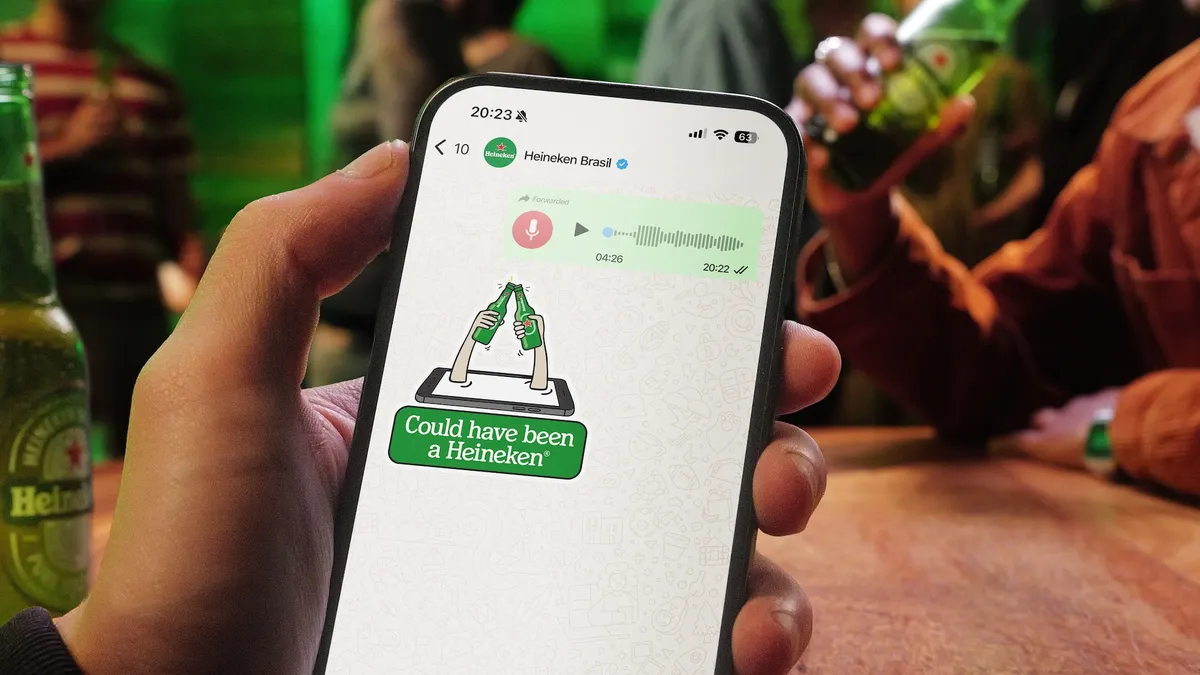At the recent Mobile World Congress in Barcelona, smartphone makers from Samsung to Huawei, LG and HTC tried to get consumers excited about the next generation of devices, and some, such as Asus, clearly received inspiration from Apple's iPhone X. Despite reports that sales for the high-end phone are missing the mark so far, this hasn't kept forward-thinking mobile marketers from talking about a name that wasn't in Barcelona — Apple — and how the iPhone X may be paving the way for new mobile engagements.
With Apple's AirPower wireless charger rumored to be shipping this month, one sometimes overlooked detail in the iPhone X launch was Apple's decision to support Qi, a standard that allows devices to be charged wirelessly. Marketers could harness wireless charging to create unique value in segments like quick-service restaurants (QSRs), according to Ben Phillips, global head of mobile at MediaCom in London, U.K.
"Imagine if you go into a McDonald's and all of the benches have low-frequency charging underneath. That can be the driving factor of choosing one QSR versus the other," Phillips told Mobile Marketer.
Much like consumers's need to sign into a portal to use a coffee shop or retailer's Wi-Fi, Phillips said brands might be able to similarly request information in exchange for offering them free wireless charging. Apps could also be created to push notifications to iPhone X users when their device has reached 5% battery life and suggest the nearest place to recharge, among other helpful experiences. With ad blocking and banner blindness continuing to undermine mobile ad strategies, unique engagements like these should be a focus for marketers.
More than an AR device
Released last fall, the iPhone X introduced a vertical 12-megapixel dual-camera and a feature called "portrait lighting," which suppresses lighting to the subject's face. It also gives consumers the opportunity create 4K video at 24, 30 or 60 frames per second (fps) and the option to shoot in 1080p at 60 or 30 fps.
From a marketing standpoint, Apple senior vice president of worldwide marketing Phil Schiller has suggested these features mean the iPhone X is "specially tuned" for experiences involving augmented reality (AR), from seeing how a piece of furniture might look in the home to more creative selfie videos with its Clips editing app.
"Imagine if you go into a McDonald's and all of the benches have low-frequency charging underneath. That can be the driving factor of choosing one QSR versus the other."

Ben Phillips
Global head of mobile, MediaCom
However, industry experts argue that AR might only be the low-hanging fruit as they look at some of the other potential capabilities the iPhone X can offer brands. For example, a viral short film by Apple in China shot entirely on the iPhone X underscores the phone's storytelling capabilities. The robust experiences possible on the smartphone could also prove to be a boon to anyone hoping to drive mobile conversions, as research shows that iPhone X owners spent 2x more than other mobile holiday shoppers.
Unlocking facial recognition opportunities
In time, marketers may also be able to pursue new ways to connect with consumers via technology intended to make the iPhone X more secure. Face ID uses infrared and light scans to uniquely identify a user's face as a way of logging onto a device versus a fingerprint or the traditional password. With this technology expected to soon become available on Android phones as well, marketers should start thinking now about potential opportunities.
Although brands and agencies can't currently access facial recognition data from Apple, it could be possible to create mobile apps that "read" someone's face, offering cues to how a brand can get engage with them, said Nicholas "Rez" Rezabek, creative director at brand experience and design firm Collins.
Depending on a consumer's facial expression, for instance, a brand like Coca-Cola might be able to suggest a certain soft drink flavor, he said. Other brands might use facial recognition to serve up different kinds of content using the data as an "emotional currency" of sorts.
"This is the first step in breaking down that barrier of 'what I mean to the world' and how that world is going to be manifesting itself," Rezabek said.
While there would obviously need to be ways for consumers to opt in (and out) of such experiences, Face ID could be an indication of brands' potential to focus their activity based on the emotions of their customers, added Topher Burns, Collins' head of product and marketing.
"You can see how brand safety might be given a little more rigor if you can determine the mental or emotional state of the person who's viewing content," he said. "It could help as a safeguard against content that is negative or in any way objectionable."
Talking and listening
Marketers should also pay attention to how voice-activated experiences on the iPhone X could change the way consumers search for information or perform various functions, according to Grant Owens, chief strategy officer at Critical Mass.
"How will you use a person's data that suggests their motives based on their purchase history or where they have visited on the web?" he said. "It's a question of taking all that data I put into my phone and delivering something of value."
For example, brands could start creating their own voice-activated applications that might, in a sense, "compete" or at least co-exist with Siri, a development that could also spread to Android devices if it resonates with users.
AR, wireless charging and facial recognition don't immediately signal the end of traditional mobile apps or even traditional advertising, but marketers should be thinking ahead, Owens said.
"There is still viability [for mobile ads] but every day it's a decreasing opportunity, and brands need to be looking [for] new ways to engage," he said. "With ad blockers part of the conversation now, and with banner blindness, that's a race to the bottom of what they need to do."




















